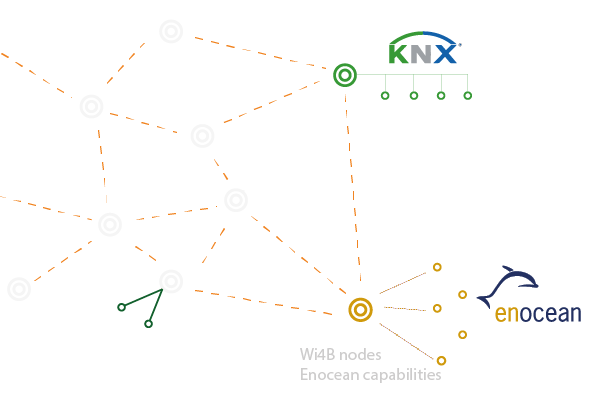Smart Building

Neural infrastructure: the Wi4B approach to smart building.
Wi4B technology permits to realize the neural infrastructure of an existing or new building in a very simple and easy installation process, with plug&play devices, capable to dialog with different commond standards (Enocean, BLE, KNX,...). The auto mesh network permits to send all the data generated from the sensors to the backbone software, and could be easly integrated in existing platform using the common software connectors (SQL db, Webservices, sockets, JSON formats,...).

Modular approach
The Wi4B Smart Building permits to handle the challenges with a modular approach, starting with the energy saving generated by the remote controls for LED lightings in order to obtain a new pervasive network that is the neural infrastructure ready to acquire and collect the data necessary to activate intelligent solutions.

Building automation
The backbone functions permit to implement a complete building automation system and can be paired with a variety of wireless energy harvesting devices, including switches, window sensors, occupancy sensors, key cards, thermostats and meters to create a fully functioning, in building and in room energy management solution.

Cloud platform
Cloud platform enables resources to be shared by different loads, and thus improves utilization. The sharing can be between enterprises, with public or community cloud, or within an enterprise, with private cloud.

Mesh network
The auto mesh network permits to share all the data generated from the sensors to the backbone plaftorm, and to the cloud. Could be easly integrated in existing third-party platform using the common software connectors (SQL, Webservices, sockets, JSON,...).
- Wireless IEEE802.15.4 with WiLamp auto mesh and adaptive power technology
- Support for multiple open standards ensures communication
- Short installation time
- Integration with third-party systems
- Display and operate without limitations (locally, centrally, remotely)
- Sensors data aggregation of different standards
- Access to a large number of easy-to-integrate field devices
- Easy data exchange between systems and their field devices
- High flexibility during the planning phase and over the entire operational lifespan
- Early recognition and warning, malfunctions, and system failures
- Display, log, and archive data on a PC or directly on location
- Automatic forwarding of important events
Key Features
Contact us today to find out how we can work together to produce effective added value to your solution.


